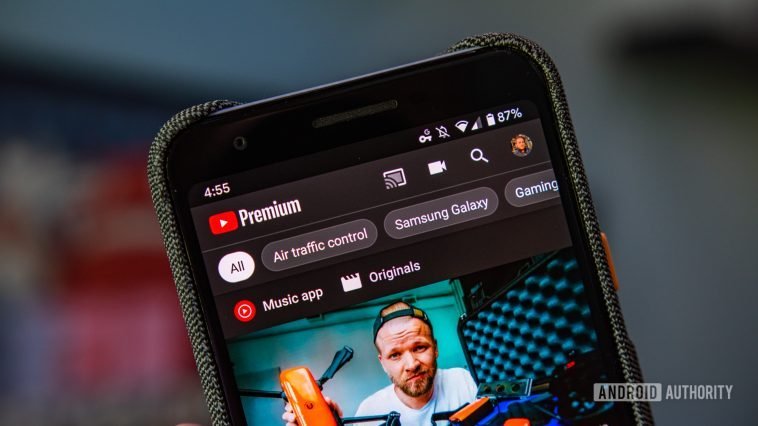Introduction.
Let’s be real—YouTube is more than just a platform for cat videos, music reactions, or deep-dive documentaries. It’s also one of the best places to make money without ever touching a warehouse.
If you’ve got a digital product—like an ebook, course, template, or even presets—you’re sitting on something valuable. The question is: how do you sell it in a way that feels natural and actually works?
That’s what this guide is about. I’ve been helping creators build real income streams using YouTube as the engine behind their digital product sales, and the truth is: you don’t need millions of views to do it. You just need the right strategy.
Let me walk you through how to do it step by step, what mistakes to avoid, and how to turn your channel into a money-making machine—even if you’re still growing.
Why YouTube Is Perfect for Selling Digital Products
YouTube is the second largest search engine in the world (right after Google). That means people go there looking for solutions.
And if your video helps solve a problem—and your digital product can make that solution easier, faster, or better—then boom, you’ve got a sale.
Here’s the thing:
Videos build trust in a way that most other platforms just can’t. Viewers hear your voice, see your face, and connect with you.
That human connection makes it way easier for them to buy from you than from someone they’ve only seen in a tweet or on a website.
And the best part? Your videos keep working for you long after you hit publish.
How Do I Sell Digital Products On YouTube?
Step 1: Know What You’re Selling (And Who It’s For)
Before you even hit record, you need to be crystal clear about two things:
- What your digital product is
- Who it’s actually helping
A lot of people create something first and then hope it sells. But it’s much smarter to do the opposite. Think about what your audience is already asking you about in the comments. What do they struggle with? What would save them time?
Examples of digital products that sell well on YouTube:
Ebooks (on topics like fitness, finance, self-help, or marketing)
Online courses (especially if you teach something in your videos)
Canva templates (great for designers, social media coaches, etc.)
LUTs and presets (perfect for photographers or videographers)
Notion templates (if you talk about productivity or systems)
The more specific your product is, the better. A “Notion template for students who work part-time” will outsell a generic one every time.
Step 2: Create Content That Leads to Your Product Naturally
Here’s the magic trick: don’t treat YouTube like an ad platform. Treat it like a problem-solving platform.
Your videos should do two things:
- Help the viewer for free
- Make them realize your product makes things easier/faster/better
Let’s say you’re selling a Canva template for content creators. You could make a video titled:
“How I Plan a Month of Content in 1 Hour (Using Canva)”
In the video, you walk through your content planning process. At the end, you casually mention:
“If you want to grab the exact template I’m using, it’s linked below. I’ve already done all the formatting and design, so you just plug in your content and go.”
That’s it. No hard sell. Just helping someone and offering the shortcut.
Other ideas that work well:
Tutorials
“How I” content
Case studies
Behind-the-scenes videos
Listicles (e.g. “Top 5 Tools I Use as a Freelance Designer”)
Step 3: Add Links That Convert
Okay, someone watches your video. They’re interested. Now what?
Make it super easy for them to find your product. Here’s how:
Link in the video description – Put it in the first two lines, so it’s visible without clicking “Show more.”
Pin a top comment – Include the link and a short CTA (“Grab the Canva template I mentioned here → [your link]”)
Mention it in the video – Just once or twice. Keep it natural. Something like:
“By the way, if you want to use the same thing I’m using here, I linked it below.”Use YouTube Cards and End Screens – Especially if you’ve got a freebie to grow your email list.
And one more thing—use a clean link. Nobody wants to click a giant, spammy-looking URL. Use something like bit.ly or a tool like ThriveCart or Gumroad that gives you a professional-looking checkout page.
Step 4: Build an Email List (Seriously)
You don’t need a huge email list to make sales. But you do need a way to follow up with people who are interested.
Offer a free version of your product, or a related lead magnet (like a checklist or cheat sheet). Use that to collect emails.
Then you can:
Send out launch emails when you release new products
Offer limited-time discounts
Build a relationship over time, which leads to more trust—and more sales
Email tools to check out:
Beehiiv (if you’re more into newsletter-style content)
Step 5: Stay Consistent (But Smart)
You don’t need to post every day. But you do need to post consistently.
Aim for:
1-2 videos a week that solve specific problems your product addresses
A clear call to action in each video (either to buy or grab the freebie)
Tracking what’s working – YouTube’s analytics will tell you which videos are bringing in the most clicks and views
Over time, you’ll learn which topics bring in the right kind of traffic—the kind that actually buys.
Real-Life Example: Small Channel, Big Sales
Let’s look at someone doing this right.
Gillian Perkins is a creator who’s built an entire business selling digital products through her YouTube channel. As of now, she has over 600K subscribers, but here’s the kicker—she started seeing real income long before that.
She sells:
Online courses
Printable planners
Business templates
And she uses simple, helpful videos to lead people to her products.
Here’s a great example of a video that sells without being salesy:
“How to Start an Online Business with No Money”
She gives solid info, builds trust, and casually plugs her product as a helpful next step.
You can do the same, even with a small audience.
FAQs
Do I need a big YouTube channel to sell digital products?
Nope.
What matters more is who is watching your videos.
A highly engaged audience of 1,000 people is way more powerful than 100,000 random views.
Should I sell directly in my videos or send people to a landing page?
Send them to a landing page. It’s easier to track, looks more professional, and gives them more info about your product.
How do I price my digital product?
Start by checking similar products on sites like Gumroad, Etsy, or Payhip. Most ebooks sell for $9–$29, templates $15–$60, and courses $49–$300+. If your product saves people time or money, don’t be afraid to charge for that value.
Can I use affiliate links too?
Absolutely. Just make sure to disclose them. But don’t rely only on affiliate income—your own products will almost always be more profitable.
Final Thoughts
Selling digital products on YouTube isn’t just possible—it’s one of the smartest ways to monetize as a creator. It’s low-cost, low-risk, and can run on autopilot once you’ve got a few strong videos in place.
You don’t need to be pushy. You don’t need a massive audience. You just need to be helpful, show up consistently, and make sure your product is solving a real problem.
So now I’ll leave you with this:
What kind of digital product would your audience actually thank you for creating?
Let me know in the comments—or start sketching it out today.





GIPHY App Key not set. Please check settings